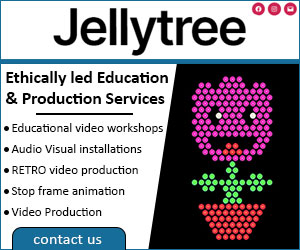Broadcast News
12/04/2018
How Viewers Engage With Narrative Structures In Movies

Much has been written about the 3-part and 5-part story structures that indicate specific plot points in the story. However, screenwriters and filmmakers would greatly benefit by discovering the science (empirical studies) of how we understand stories and how different types of narrative structures operate within the broader 3/5-part story structures.
Taking a Russian formalist and constructionist approach to meaning - this article will discuss how we understand stories through the cognitive relationship between plot development and story. This will be followed by how specific narrative event structures (e.g. suspense) optimise enjoyment and how micro-narrative structures can optimise or decrease audience engagement. These micro-narrative structures interweave through the 3/5-part story structures, operating mainly at a micro level (scene or movie sequence).
How Do We Cognitively Process Plot Development and Story?
David Bordwell proposes the syuzhet (plot) is a cause-and-effect paradigm represented by the chronological order of story events in a movie that are linked together though a pattern of time and space. These story events trigger cognitive processing (making sense of the plot) and viewers' imagination to construct the fabula (story) by them raising questions about story events, making assumptions, having expectations about future events - hypotheses testing their assumptions/expectations in relation to past story events.
So when the plot presents different story events to the viewer, such as characters, actions, scenes and key plot changes, it invites the viewer cognitively to make sense of the plot by asking questions about the fictional story world concerning who the characters are and what their goals might be, and who is good and bad (Töpper & Schwan, 2008). However, to optimise engagement it is crucial that the plot consistently conceals, delays and reveals story information to the viewer at specific times to support the construction of the story. As story information is presented to the viewer it cues them to make assumptions, inferences, and anticipations about narrative events - a process that defines how we create the story (Bordwell 1985).
Bordwell's model can be applied to key narrative structures that consistently engage viewers such as suspense. In this case, if the plot (syuzhet) provides too much or too little story information, it can diminish the impact of the story (fabula) and diminish suspense. Bordwell explains: "…Only by delaying the revelation of some information can the plot arouse anticipation, curiosity, suspense and surprise," (Bordwell,1985).
Although Bordwell's narrative model provides an established theory of how the mechanisms of plot (syuzhet) and story (fabula) occurs through viewer active perception (Berliner & Cohen, 2011), psychologists (William Brewer and Edward Lichtenstein) explain what specific narrative event structures optimise viewer enjoyment.
Narrative Event Structures: Enjoyment of Stories
In a study, Stories are to Entertain: A Structural-Affect Theory of Stories (Brewer & Lichtenstein, 1982), three different theories were identified that explain how we understand narrative. These are plan comprehension (the way we interpret the observations of actions of another person's intentions), narrative comprehension (the ability of how we understand narrative) and story schemas (individual knowledge and enjoyment of stories).
Plan comprehension is nuanced with story schema, because they are a core element to understanding a story, as they provide key elements and sequences of dramatic events and fictional characters. Brewer and colleagues discovered that participants naturally use a plan schema to understand and memorise elements from a story and that we remember goal-oriented action sequences like suspense, more than non-goal-oriented action sequences (Brewer & Lichtenstein, 1982).
From the results of their study, they proposed three clear major narrative event structures that encouraged participant enjoyment in most stories: suspense, surprise, and curiosity, which operate within a specific event sequence. For example, in this short article, we will focus on the suspense narrative structure, which is driven by an important initiating event that relates to a specific fictional character and produces a significant outcome event, either good or bad. Additional story events between the initiating and outcome event are utilised to construct suspense with the outcome resolving suspense.
Susan Smith provides a narrative model of suspense that can be applied to Brewer & Lichtenstein's suspense event structure on a macro or micro level. Her model presents generic ways the viewer is positioned with fictional characters, and the story world through vicarious, shared, direct, hybrid and composite suspense.
Suspense Narrative Structures
Susan Smith's suspense narrative model was developed through her textual analysis of Alfred Hitchcock's films. According to Susan Smith, Alfred Hitchcock's prototype suspense narrative structure, which she calls vicarious suspense, is when the viewer is privileged with information about a fictional character's (usually the protagonist) situation that they themselves are unaware of.
Shared suspense is where the viewer gains a deeper empathetic connection with a fictional character which occurs when the characters life is turned upside down, which invites the viewer to empathise with the character and their situation.
Direct suspense is essentially where the viewer experiences suspense alone rather than through an emotional bond with a protagonist. For Susan Smith, the purest form of direct suspense is when the point-of-view (POV) camera shot is seen in the first person and the viewer experiences suspense directly. This viewing position is also known as the subjective viewpoint (Katz, 1991).
However, she also discovered that direct suspense can be synchronised with vicarious and shared suspense creating a hybrid form of suspense, or they can operate side by side forming what she describes as a composite form of suspense. Susan Smith's narrative model of suspense is a valuable narrative framework to measure the construction of suspense through three specific narrative structures that fit within Brewer & Lichtenstein's suspense narrative event structure.
Vicarious, shared and direct suspense all offer different ways the viewer is positioned in relation to fictional characters. For example, vicarious suspense in a thriller film can be used to increase viewer anxieties when the antagonist is behind the protagonist who is unaware of any danger. As mentioned previously, for direct suspense the viewer can experience a direct attack, which is a commonly used narrative structure in horror-thriller films to scare the viewer (Hutchings, 2004; Smith, 2000). Shared suspense can intensify suspense by inviting the viewer to empathise with the protagonist in a horror-thriller film whose life is being threatened by a known or unknown antagonist.
Narrative Time Structure
Minet de Wied (1994) explains that timing is an essential aspect of narrative structure, in terms of how dramatic story events unfold. The time structures of textual elements within the story are: characters, actions, and events, while the formal components of film making (cinematic techniques) provide the stylistic aesthetics, time and form, such as composition, camera motion, type and duration of shot, colour, sound and lighting. Editing provides the filmmaker with control of the order and duration of story events and what is presented on screen.
By Dr Keith Bound, Receptive Cinema
www.receptivecinema.com
Taking a Russian formalist and constructionist approach to meaning - this article will discuss how we understand stories through the cognitive relationship between plot development and story. This will be followed by how specific narrative event structures (e.g. suspense) optimise enjoyment and how micro-narrative structures can optimise or decrease audience engagement. These micro-narrative structures interweave through the 3/5-part story structures, operating mainly at a micro level (scene or movie sequence).
How Do We Cognitively Process Plot Development and Story?
David Bordwell proposes the syuzhet (plot) is a cause-and-effect paradigm represented by the chronological order of story events in a movie that are linked together though a pattern of time and space. These story events trigger cognitive processing (making sense of the plot) and viewers' imagination to construct the fabula (story) by them raising questions about story events, making assumptions, having expectations about future events - hypotheses testing their assumptions/expectations in relation to past story events.
So when the plot presents different story events to the viewer, such as characters, actions, scenes and key plot changes, it invites the viewer cognitively to make sense of the plot by asking questions about the fictional story world concerning who the characters are and what their goals might be, and who is good and bad (Töpper & Schwan, 2008). However, to optimise engagement it is crucial that the plot consistently conceals, delays and reveals story information to the viewer at specific times to support the construction of the story. As story information is presented to the viewer it cues them to make assumptions, inferences, and anticipations about narrative events - a process that defines how we create the story (Bordwell 1985).
Bordwell's model can be applied to key narrative structures that consistently engage viewers such as suspense. In this case, if the plot (syuzhet) provides too much or too little story information, it can diminish the impact of the story (fabula) and diminish suspense. Bordwell explains: "…Only by delaying the revelation of some information can the plot arouse anticipation, curiosity, suspense and surprise," (Bordwell,1985).
Although Bordwell's narrative model provides an established theory of how the mechanisms of plot (syuzhet) and story (fabula) occurs through viewer active perception (Berliner & Cohen, 2011), psychologists (William Brewer and Edward Lichtenstein) explain what specific narrative event structures optimise viewer enjoyment.
Narrative Event Structures: Enjoyment of Stories
In a study, Stories are to Entertain: A Structural-Affect Theory of Stories (Brewer & Lichtenstein, 1982), three different theories were identified that explain how we understand narrative. These are plan comprehension (the way we interpret the observations of actions of another person's intentions), narrative comprehension (the ability of how we understand narrative) and story schemas (individual knowledge and enjoyment of stories).
Plan comprehension is nuanced with story schema, because they are a core element to understanding a story, as they provide key elements and sequences of dramatic events and fictional characters. Brewer and colleagues discovered that participants naturally use a plan schema to understand and memorise elements from a story and that we remember goal-oriented action sequences like suspense, more than non-goal-oriented action sequences (Brewer & Lichtenstein, 1982).
From the results of their study, they proposed three clear major narrative event structures that encouraged participant enjoyment in most stories: suspense, surprise, and curiosity, which operate within a specific event sequence. For example, in this short article, we will focus on the suspense narrative structure, which is driven by an important initiating event that relates to a specific fictional character and produces a significant outcome event, either good or bad. Additional story events between the initiating and outcome event are utilised to construct suspense with the outcome resolving suspense.
Susan Smith provides a narrative model of suspense that can be applied to Brewer & Lichtenstein's suspense event structure on a macro or micro level. Her model presents generic ways the viewer is positioned with fictional characters, and the story world through vicarious, shared, direct, hybrid and composite suspense.
Suspense Narrative Structures
Susan Smith's suspense narrative model was developed through her textual analysis of Alfred Hitchcock's films. According to Susan Smith, Alfred Hitchcock's prototype suspense narrative structure, which she calls vicarious suspense, is when the viewer is privileged with information about a fictional character's (usually the protagonist) situation that they themselves are unaware of.
Shared suspense is where the viewer gains a deeper empathetic connection with a fictional character which occurs when the characters life is turned upside down, which invites the viewer to empathise with the character and their situation.
Direct suspense is essentially where the viewer experiences suspense alone rather than through an emotional bond with a protagonist. For Susan Smith, the purest form of direct suspense is when the point-of-view (POV) camera shot is seen in the first person and the viewer experiences suspense directly. This viewing position is also known as the subjective viewpoint (Katz, 1991).
However, she also discovered that direct suspense can be synchronised with vicarious and shared suspense creating a hybrid form of suspense, or they can operate side by side forming what she describes as a composite form of suspense. Susan Smith's narrative model of suspense is a valuable narrative framework to measure the construction of suspense through three specific narrative structures that fit within Brewer & Lichtenstein's suspense narrative event structure.
Vicarious, shared and direct suspense all offer different ways the viewer is positioned in relation to fictional characters. For example, vicarious suspense in a thriller film can be used to increase viewer anxieties when the antagonist is behind the protagonist who is unaware of any danger. As mentioned previously, for direct suspense the viewer can experience a direct attack, which is a commonly used narrative structure in horror-thriller films to scare the viewer (Hutchings, 2004; Smith, 2000). Shared suspense can intensify suspense by inviting the viewer to empathise with the protagonist in a horror-thriller film whose life is being threatened by a known or unknown antagonist.
Narrative Time Structure
Minet de Wied (1994) explains that timing is an essential aspect of narrative structure, in terms of how dramatic story events unfold. The time structures of textual elements within the story are: characters, actions, and events, while the formal components of film making (cinematic techniques) provide the stylistic aesthetics, time and form, such as composition, camera motion, type and duration of shot, colour, sound and lighting. Editing provides the filmmaker with control of the order and duration of story events and what is presented on screen.
By Dr Keith Bound, Receptive Cinema
www.receptivecinema.com
Top Related Stories
Click here for the latest broadcast news stories.
16/04/2018
How Micro-Narrative Structures Optimise Engagement In Movies
This article will be useful to screenwriters and filmmakers in understanding the science of how audiences engage with specific narrative structures. I
How Micro-Narrative Structures Optimise Engagement In Movies
This article will be useful to screenwriters and filmmakers in understanding the science of how audiences engage with specific narrative structures. I
05/02/2007
Suspense Thriller To Beginning Shooting In Bruges
Academy Award-winning writer/director Martin McDonagh’s suspense thriller In Bruges will start an eight-week shoot on location in the Belgium city of
Suspense Thriller To Beginning Shooting In Bruges
Academy Award-winning writer/director Martin McDonagh’s suspense thriller In Bruges will start an eight-week shoot on location in the Belgium city of
13/11/2024
ITV Licenses Disney+ Original, Coleen Rooney: The Real Wagatha Story
ITV has licensed Disney+ original, Coleen Rooney: The Real Wagatha Story, from Disney Entertainment to ITVX and ITV2 as the nation prepares to watch C
ITV Licenses Disney+ Original, Coleen Rooney: The Real Wagatha Story
ITV has licensed Disney+ original, Coleen Rooney: The Real Wagatha Story, from Disney Entertainment to ITVX and ITV2 as the nation prepares to watch C
27/03/2024
Arrow Media Targets Story-Telling With Limecraft Online Content Management
Arrow Media, an award-winning producer of documentary, factual and non-scripted content, creates high quality programming covering a wide range of sub
Arrow Media Targets Story-Telling With Limecraft Online Content Management
Arrow Media, an award-winning producer of documentary, factual and non-scripted content, creates high quality programming covering a wide range of sub
06/02/2024
9 Story Media Group Acquires Portfolio Entertainment's Slate
9 Story Media Group has acquired Portfolio Entertainment's library, production slate and development projects. Portfolio Entertainment was founded in
9 Story Media Group Acquires Portfolio Entertainment's Slate
9 Story Media Group has acquired Portfolio Entertainment's library, production slate and development projects. Portfolio Entertainment was founded in
26/09/2023
Tall Story Pictures Appoints New Executive Producer
Tall Story Pictures, the ITV Studios label behind hit returning dramas such as The Bay and Grace, has appointed Phil Hunter as its Executive Producer.
Tall Story Pictures Appoints New Executive Producer
Tall Story Pictures, the ITV Studios label behind hit returning dramas such as The Bay and Grace, has appointed Phil Hunter as its Executive Producer.
07/07/2022
Actor Chris Hemsworth To Read CBeebies Bedtime Story
Australian actor Chris Hemsworth is to make his CBeebies debut telling the story of a little bear who is frightened of the rain and thunder. On Friday
Actor Chris Hemsworth To Read CBeebies Bedtime Story
Australian actor Chris Hemsworth is to make his CBeebies debut telling the story of a little bear who is frightened of the rain and thunder. On Friday
09/08/2021
Channel 4 Commissions bin Laden: The Inside Story
Channel 4 has commissioned Voltage TV to produce a three-part documentary series, bin Laden: The Inside Story. From a quiet and introspective son of a
Channel 4 Commissions bin Laden: The Inside Story
Channel 4 has commissioned Voltage TV to produce a three-part documentary series, bin Laden: The Inside Story. From a quiet and introspective son of a
24/06/2019
Toy Story 4 Pulls In £186m Worldwide
Toy Story 4 pulled in around £187million worldwide in its first weekend. It just fell short in the US where it was predicted $140m however it took in
Toy Story 4 Pulls In £186m Worldwide
Toy Story 4 pulled in around £187million worldwide in its first weekend. It just fell short in the US where it was predicted $140m however it took in
16/08/2018
Story House Productions Upgrades Storage Network With Facilis Solution
Story House Productions has upgraded its Berlin-based shared storage network with Facilis' 448TB Hub Server Stack. Systempiloten, a Facilis Authorised
Story House Productions Upgrades Storage Network With Facilis Solution
Story House Productions has upgraded its Berlin-based shared storage network with Facilis' 448TB Hub Server Stack. Systempiloten, a Facilis Authorised
18/12/2017
Production News : BBC Commissions 'Definitive Story' Of Harvey Weinstein
BBC Two has announced that it has commissioned a special feature-length documentary to tell the definitive story of Harvey Weinstein. Weinstein (worki
Production News : BBC Commissions 'Definitive Story' Of Harvey Weinstein
BBC Two has announced that it has commissioned a special feature-length documentary to tell the definitive story of Harvey Weinstein. Weinstein (worki
17/11/2017
UK Studios: An International Success Story
It has often been said that Hollywood is the most recognisable film industry in the world, with hundreds of movies and television series generated eve
UK Studios: An International Success Story
It has often been said that Hollywood is the most recognisable film industry in the world, with hundreds of movies and television series generated eve
21/08/2017
Production News : BBC Two Announce Second Series Of American Crime Story
BBC Two has acquired the second instalment of anthology series American Crime Story. The Assassination of Gianni Versace: American Crime Story - the f
Production News : BBC Two Announce Second Series Of American Crime Story
BBC Two has acquired the second instalment of anthology series American Crime Story. The Assassination of Gianni Versace: American Crime Story - the f
17/02/2017
Sachtler Helps Tell Story Of Skid Row Marathon
Every Monday at 6am, criminal court judge Craig Mitchell takes a running group on a six-mile run through the streets of downtown Los Angeles, from Ski
Sachtler Helps Tell Story Of Skid Row Marathon
Every Monday at 6am, criminal court judge Craig Mitchell takes a running group on a six-mile run through the streets of downtown Los Angeles, from Ski
05/08/2016
Elstree Studios: A Success Story
Elstree Studios is now a success story rescued from the wrecking ball in 1996. This year, Elstree celebrates its 90th year birthday along with Her Maj
Elstree Studios: A Success Story
Elstree Studios is now a success story rescued from the wrecking ball in 1996. This year, Elstree celebrates its 90th year birthday along with Her Maj















